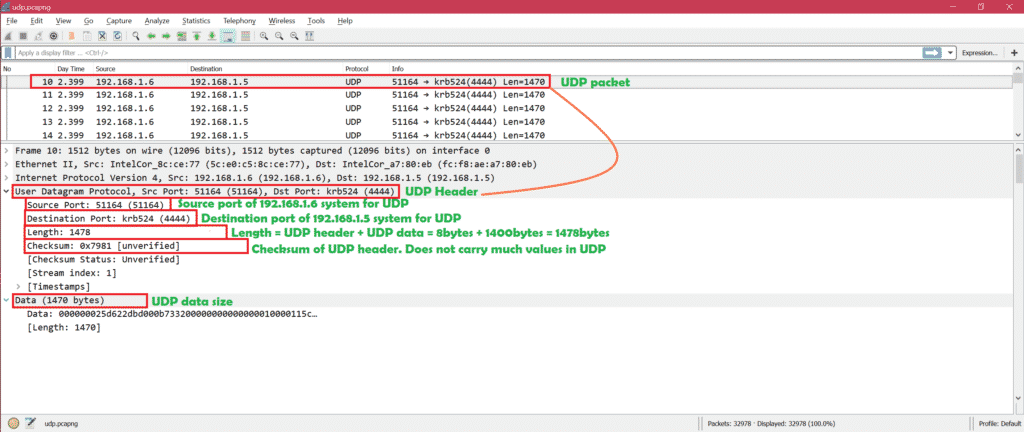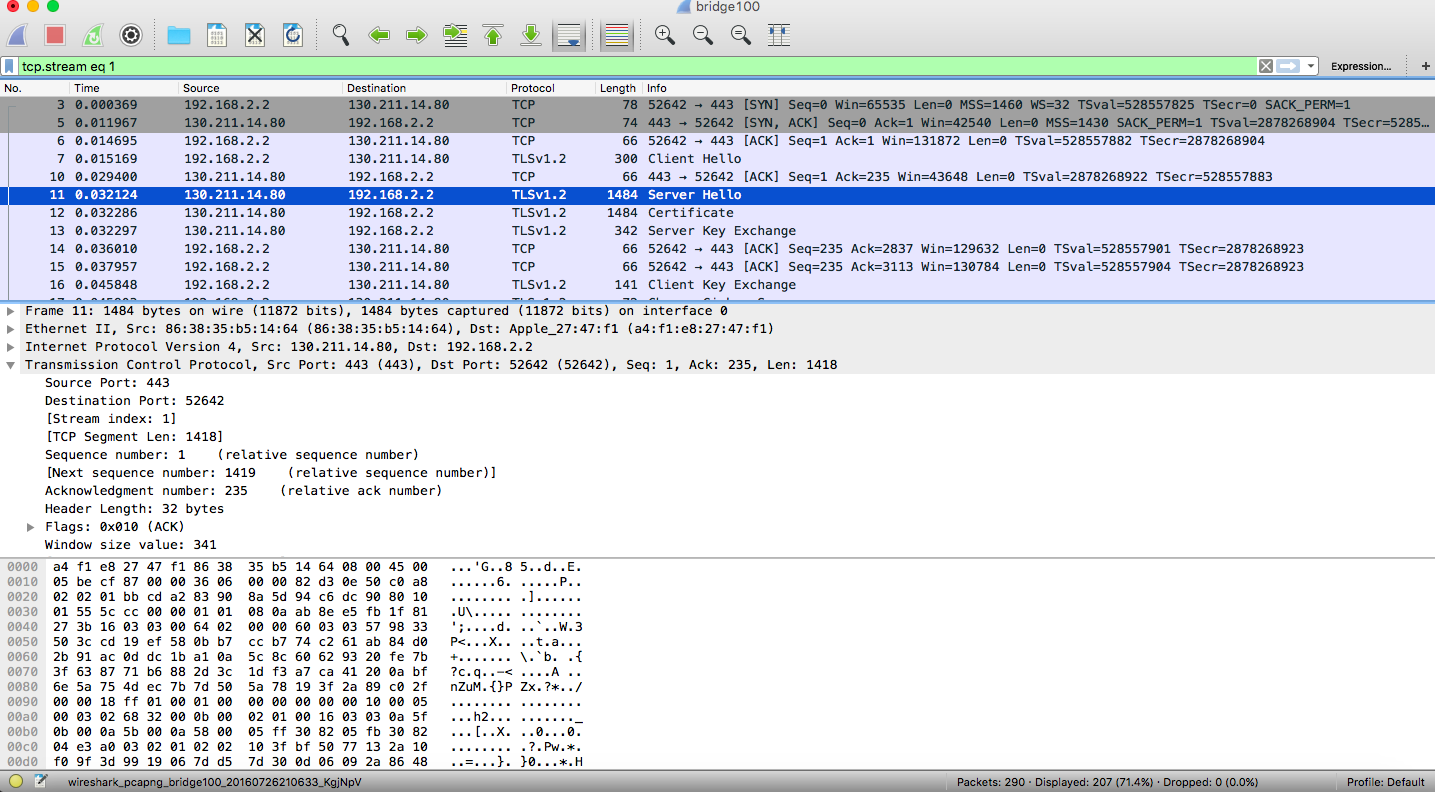
- #HOW TO SEE APPLICATION LAYER IN WIRESHARK PCAP CODE#
- #HOW TO SEE APPLICATION LAYER IN WIRESHARK PCAP SERIES#
Setting only_summaries to True during capture will give us a fixed set of attributes, regardless of the protocols present in the packet. As stated in a previous post we have control for how much info about the packets we store in each packet option through the only_summaries argument in the LiveCapture and ReadCapture modules.

These packet objects will have methods and attributes that give us access to the header and payload info of each packet. When we have captured packets in a capture object, they are stored as a list of packet objects.
#HOW TO SEE APPLICATION LAYER IN WIRESHARK PCAP SERIES#
This is optional.So far in this series we've done a lot with capturing packets and working with the capture object, but finally we're going to get to the fun part and finally start playing with some PACKETS!!!!
Compression Method: The compression algorithm agreed by both the server and the client. 
If there is no supporting cipher suite, then a handshake failure alert is created.
Cipher Suite: The single strongest cipher suite that both the server and the client support. The server can also send an empty ID, indicating the session cannot be resumed. If the server doesn’t want to resume the same session, then a new ID is generated. If a match is found and the server wants to use the same session state, it returns the same ID as sent by the client.  Session Identifier: Unique number to identify the session for the corresponding connection with the client.If the session ID in the client hello message is not empty, the server will find a match in the session cache. Server Random: 32-byte pseudorandom number used to generate the Master Secret. Server Version: The highest TLS protocol version supported by the server which is also supported by the client. The Server Hello contains the following information: The steps involved in the TLS handshake are shown below: The entire sequence which involves setting up the session identifier, TLS protocol version, negotiating the cipher suite, certificate authentication of the peers and cryptographic key exchange between peers is called a TLS Handshake. TLS protocol describes the steps to authenticate the peers and set up a secure connection with defined parameters. Handshake: To communicate over a secure channel, two peers must agree on the cryptographic keys and encryption algorithms for that session. Application Data: This protocol ensures that messages are fragmented, compressed, encrypted and transmitted in a secure manner. The change cipher spec message, transmitted by both the client and the server, defines the re-negotiated cipher spec and keys that will be used for all the messages exchanged henceforth. Change Cipher Spec: It defines changes in ciphering strategies. It is used to notify the peer of any error condition that has occurred. Alert: This sub-protocol defines the alert levels and provides a description of the alerts. The higher layer consists of the following sub-protocols:. Transmitting the data from the upper application layer to the lower transport layer and vice versa.
Session Identifier: Unique number to identify the session for the corresponding connection with the client.If the session ID in the client hello message is not empty, the server will find a match in the session cache. Server Random: 32-byte pseudorandom number used to generate the Master Secret. Server Version: The highest TLS protocol version supported by the server which is also supported by the client. The Server Hello contains the following information: The steps involved in the TLS handshake are shown below: The entire sequence which involves setting up the session identifier, TLS protocol version, negotiating the cipher suite, certificate authentication of the peers and cryptographic key exchange between peers is called a TLS Handshake. TLS protocol describes the steps to authenticate the peers and set up a secure connection with defined parameters. Handshake: To communicate over a secure channel, two peers must agree on the cryptographic keys and encryption algorithms for that session. Application Data: This protocol ensures that messages are fragmented, compressed, encrypted and transmitted in a secure manner. The change cipher spec message, transmitted by both the client and the server, defines the re-negotiated cipher spec and keys that will be used for all the messages exchanged henceforth. Change Cipher Spec: It defines changes in ciphering strategies. It is used to notify the peer of any error condition that has occurred. Alert: This sub-protocol defines the alert levels and provides a description of the alerts. The higher layer consists of the following sub-protocols:. Transmitting the data from the upper application layer to the lower transport layer and vice versa. #HOW TO SEE APPLICATION LAYER IN WIRESHARK PCAP CODE#
Applying the Message Authentication Code (MAC), a hash to maintain the data integrity. Compressing/decompressing the outgoing/incoming data. Fragmenting the message to be transmitted into manageable blocks. TCP Record Protocol Layer – This is the lower layer which lies on top of the TCP layer and is responsible for:. It is designed to work on top of a reliable transport protocol such as TCP (but has been adapted to UDP, as well) and is divided into two sub-layers: TLS lies in between the application and the transport layer.







 0 kommentar(er)
0 kommentar(er)
